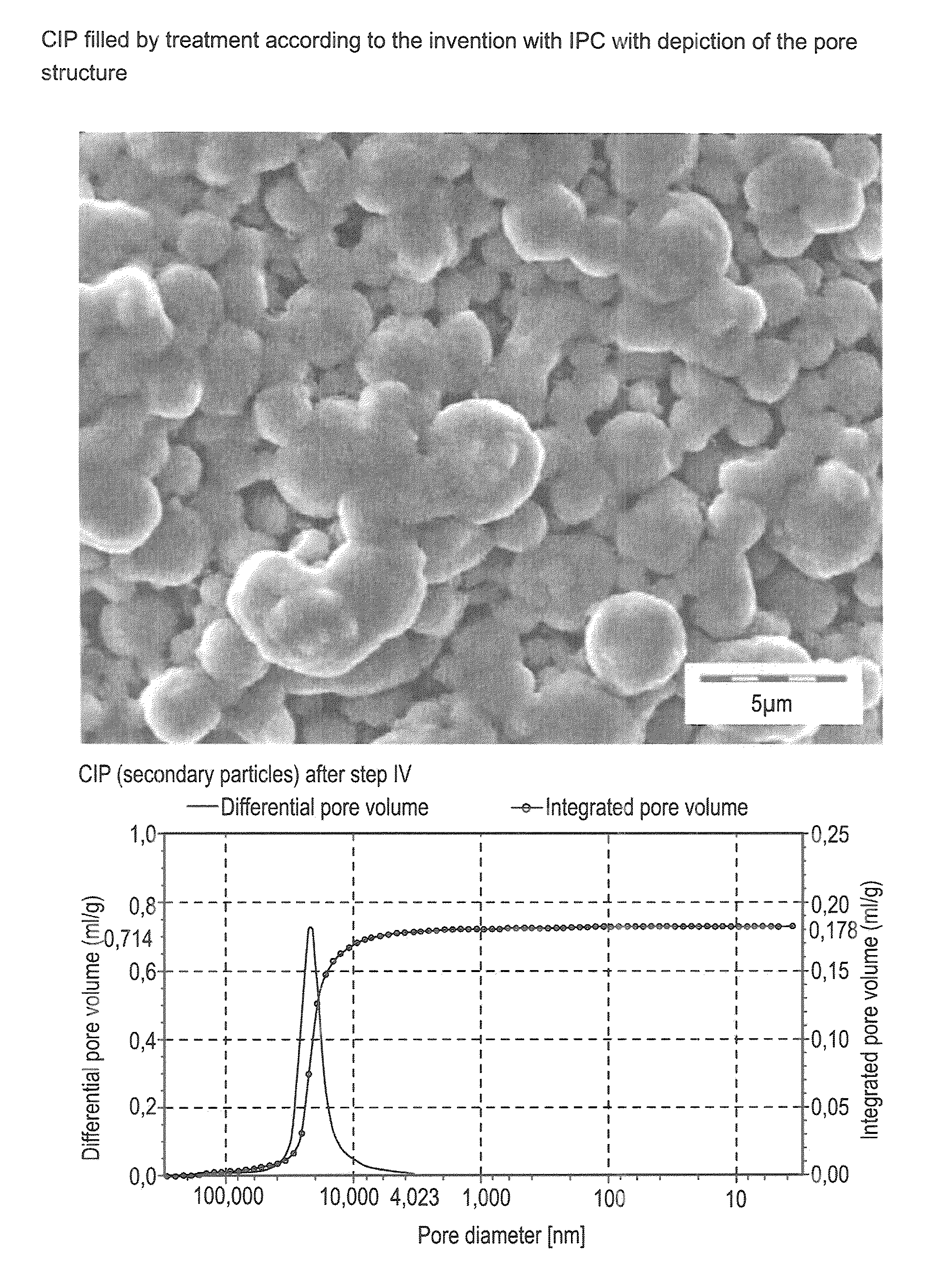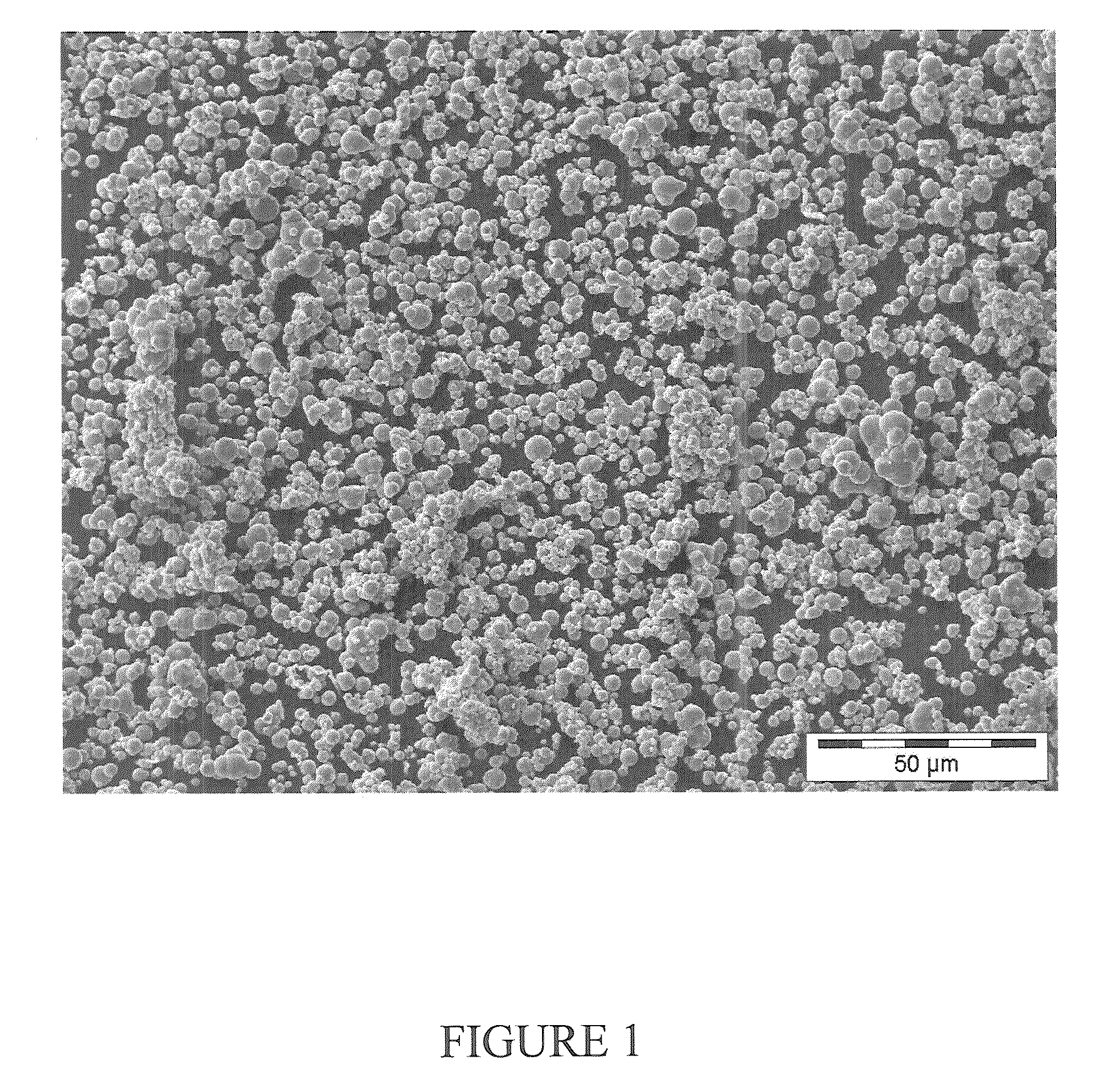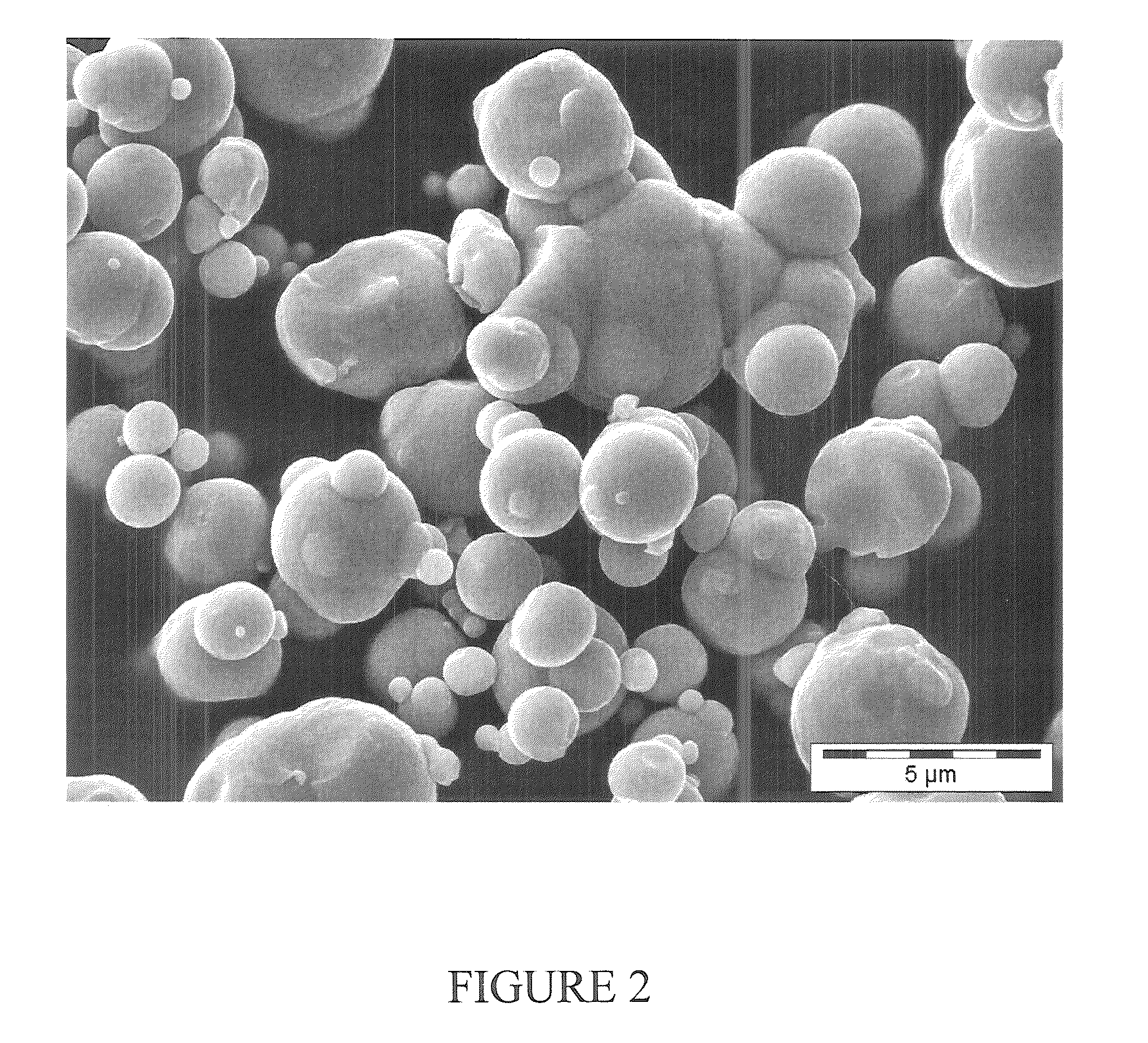Iron-comprising heterogeneous catalyst and process for preparing olefins by reaction of carbon monoxide with hydrogen
a heterogeneous catalyst, iron oxide technology, applied in the direction of catalyst activation/preparation, metal/metal-oxide/metal-hydroxide catalysts, etc., can solve the problems of large amounts of undesirable methane, loss of metal, and difficulty in reducing iron oxides as catalyst starting materials, etc., to improve mechanical stability, improve the effect of operation life and increase stability
- Summary
- Abstract
- Description
- Claims
- Application Information
AI Technical Summary
Benefits of technology
Problems solved by technology
Method used
Image
Examples
example 1 (
According to the Invention)
[0100]Filling of the pores of pure, agglomerated carbonyl iron powder (secondary particles) from step II with iron pentacarbonyl as per step III and IV.
[0101]The amount of iron pentacarbonyl necessary for filling the pores having a diameter of, in particular, <4000 nm was determined by means of mercury porosimetry (DIN 66133).
[0102]200 ml of carbonyl iron material having a particle size distribution of the secondary particles such that 90% by weight have a diameter in the range from 50 to 100 μm, see FIG. 4, were produced from carbonyl iron powder grade CN, BASF AG or now BASF SE, by treatment with hydrogen at at least 300° C. The carbonyl iron material was dried at 105° C. for 5 hours under an argon atmosphere in a stirred vessel. 10 ml of iron pentacarbonyl were then introduced. The vessel was subsequently heated to an internal temperature of about 165° C. The decomposition was carried out at 165° C. with stirring of the particles. The reaction was compl...
example 2 (
According to the Invention)
[0103]Production of K- and Cu-Doped, Filled Carbonyl Iron Catalyst by Impregnation of the Catalyst From Example 1
[0104]50 g of catalyst were produced as described in example 1 and impregnated with 5.5 ml of aqueous potassium / copper nitrate solution under ambient conditions (room temperature, atmospheric pressure). The aqueous potassium / copper nitrate solution was produced by dissolving 1.93 g of copper nitrate trihydrate (>99.5%, Merck) and 0.26 g of potassium nitrate (99%, Riedel de Haen) in 5.5 ml of demineralized water. The impregnated catalyst was dried at 120° C. for 4 hours. The catalyst obtained comprised 0.18% by weight of K and 0.88% by weight of Cu.
example 3 (
Comparative Catalyst)
[0105]Carbonyl iron material having a particle size distribution of the secondary particles such that 90% by weight have a diameter in the range from 50 to 100 μm, see FIG. 4, produced as described in example 1. This material was not after-treated with iron pentacarbonyl.
[0106]Performance of the catalysts according to the invention (examples 1, 2) and the comparative catalyst (example 3) in the process of the invention with prior identical activation
PUM
| Property | Measurement | Unit |
|---|---|---|
| Temperature | aaaaa | aaaaa |
| Temperature | aaaaa | aaaaa |
| Percent by mass | aaaaa | aaaaa |
Abstract
Description
Claims
Application Information
 Login to View More
Login to View More - R&D
- Intellectual Property
- Life Sciences
- Materials
- Tech Scout
- Unparalleled Data Quality
- Higher Quality Content
- 60% Fewer Hallucinations
Browse by: Latest US Patents, China's latest patents, Technical Efficacy Thesaurus, Application Domain, Technology Topic, Popular Technical Reports.
© 2025 PatSnap. All rights reserved.Legal|Privacy policy|Modern Slavery Act Transparency Statement|Sitemap|About US| Contact US: help@patsnap.com



